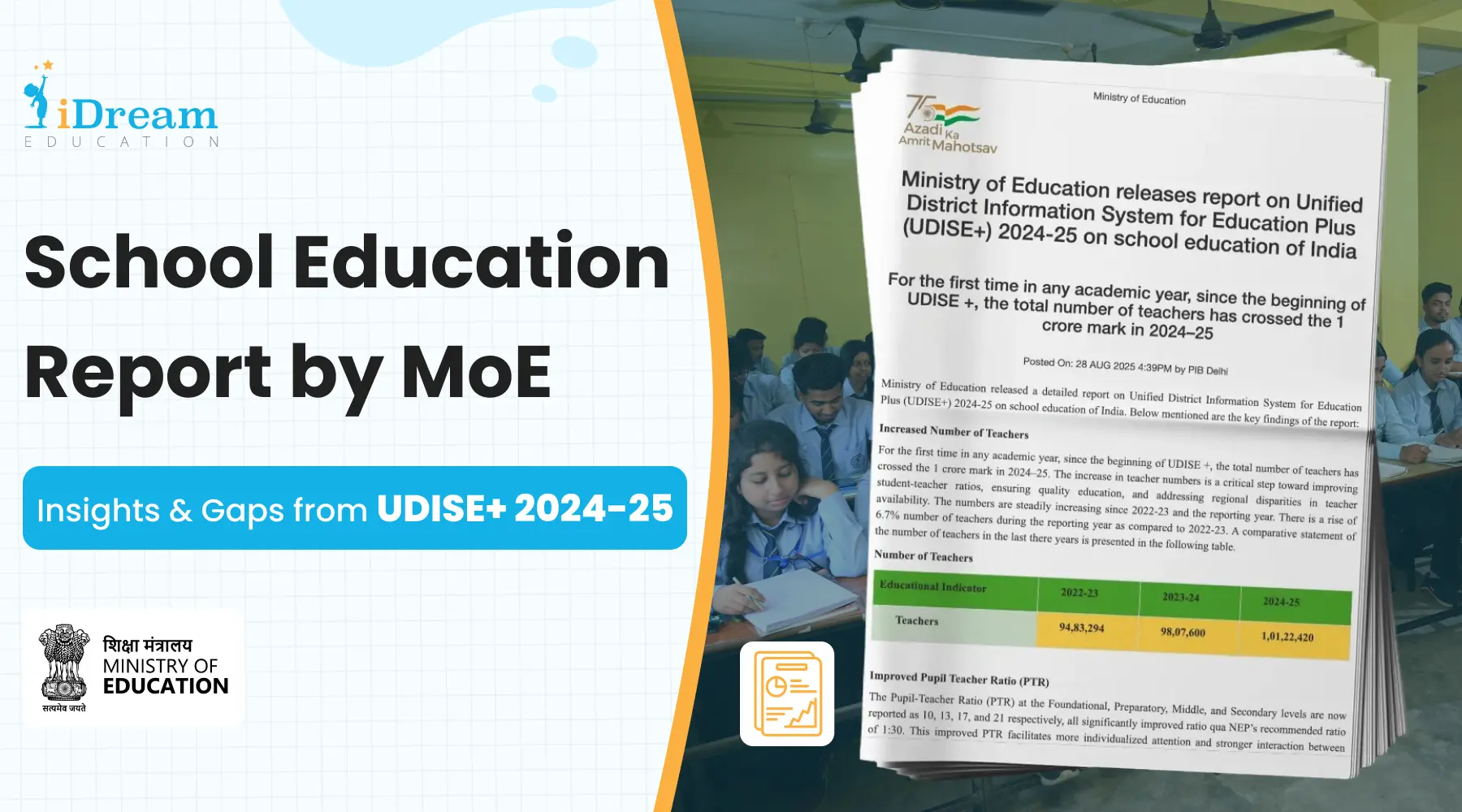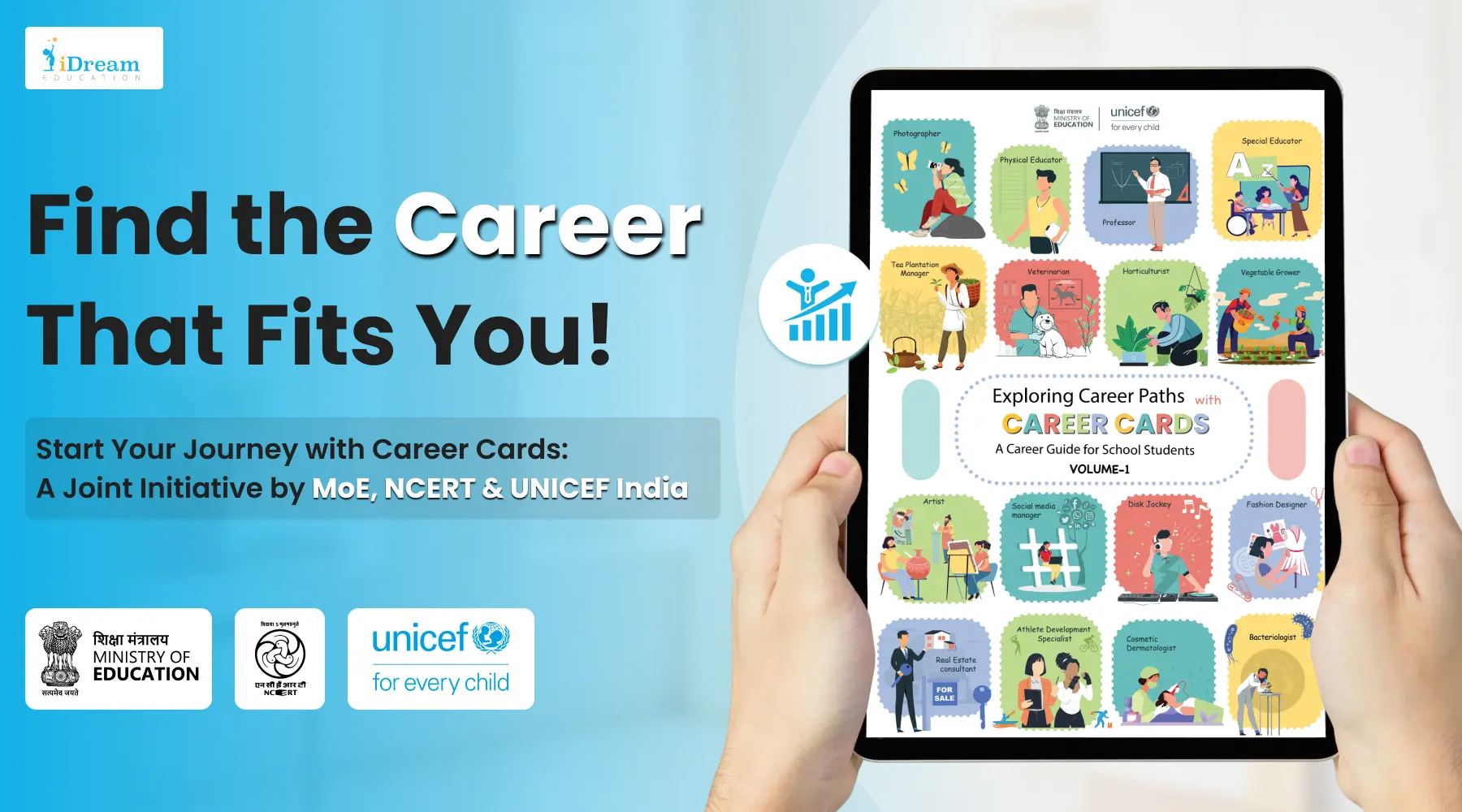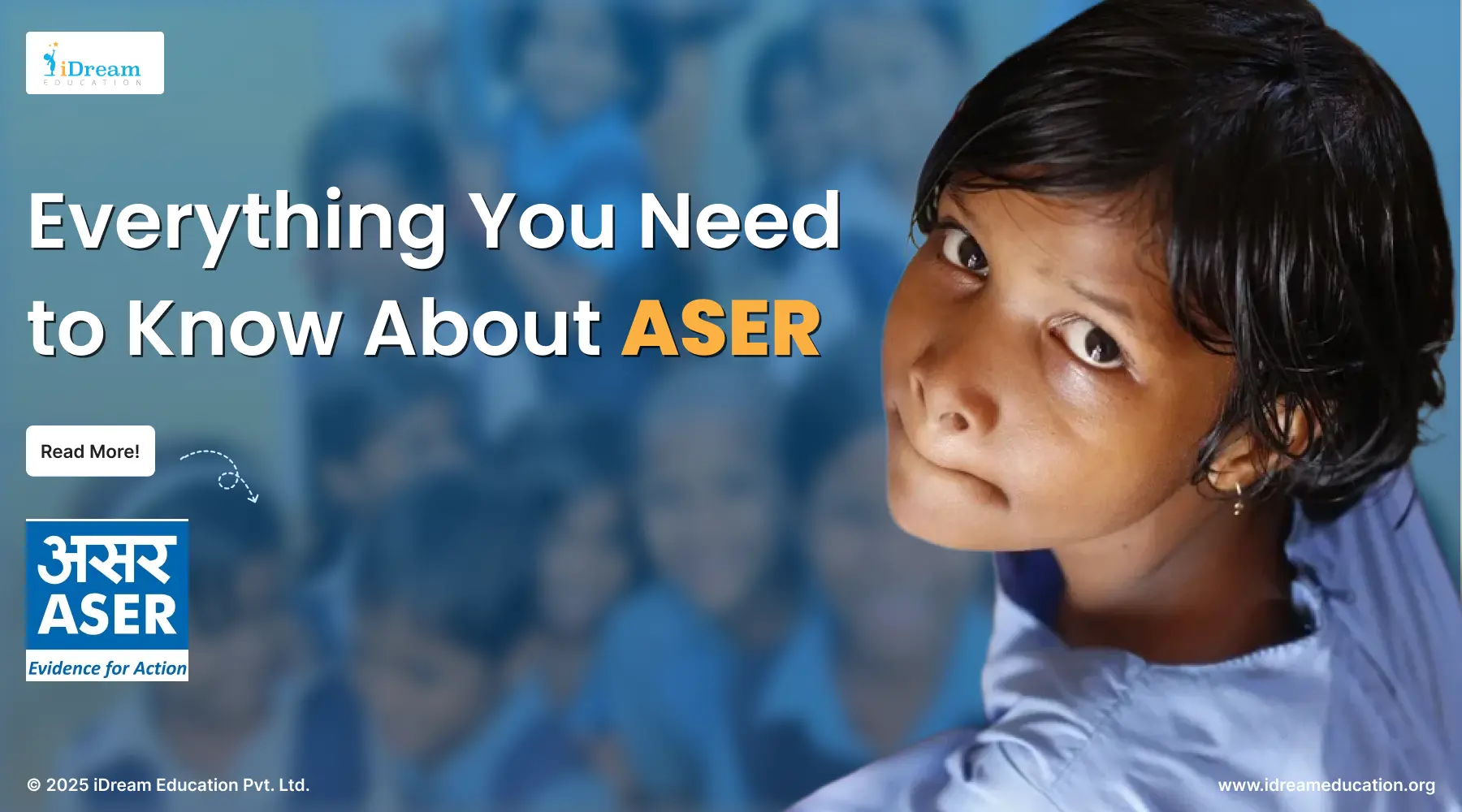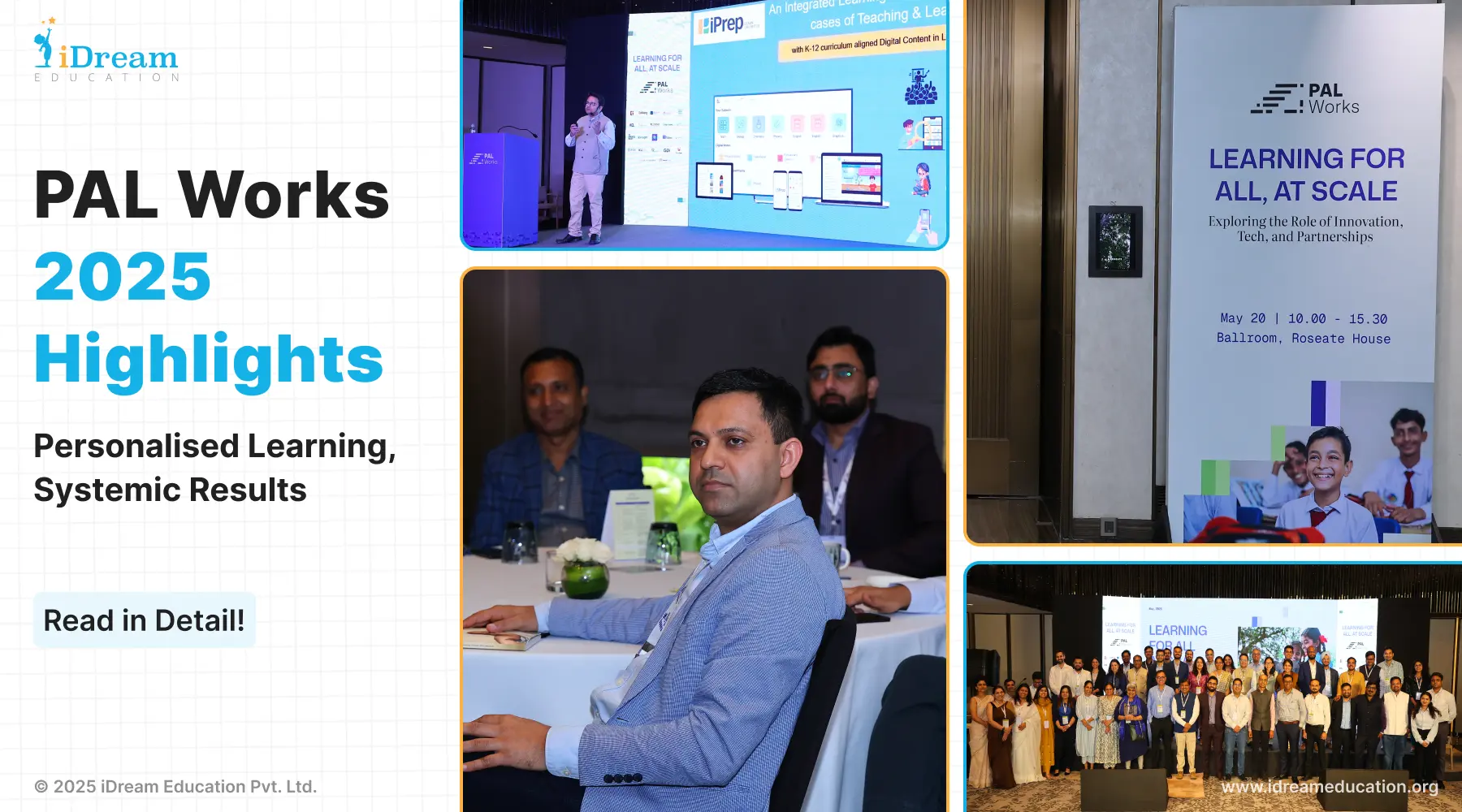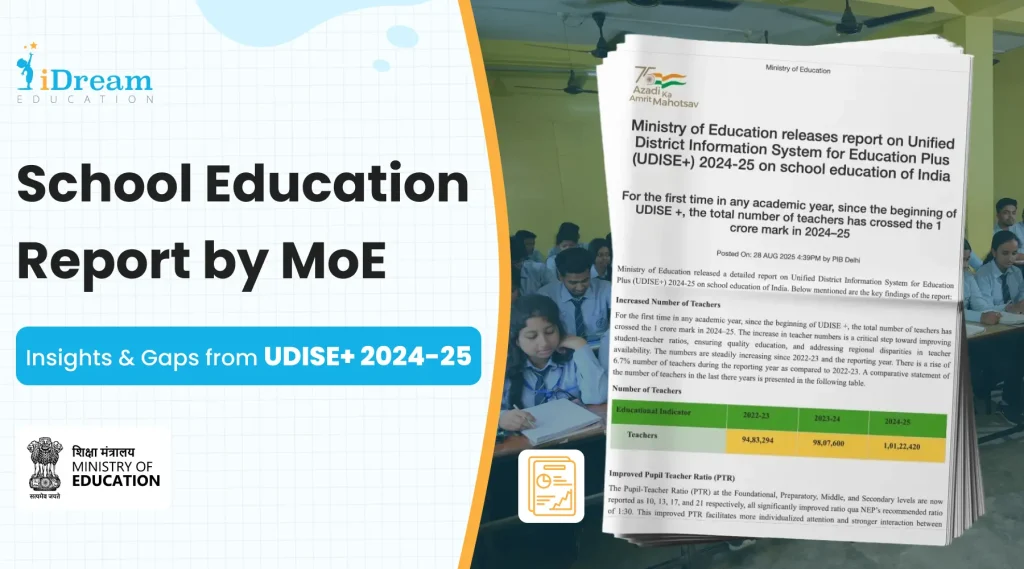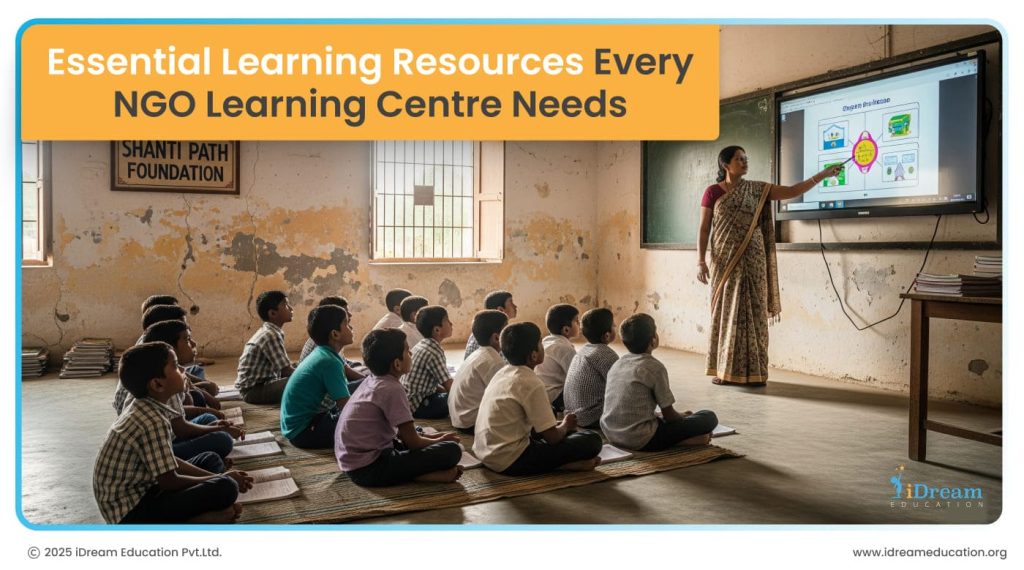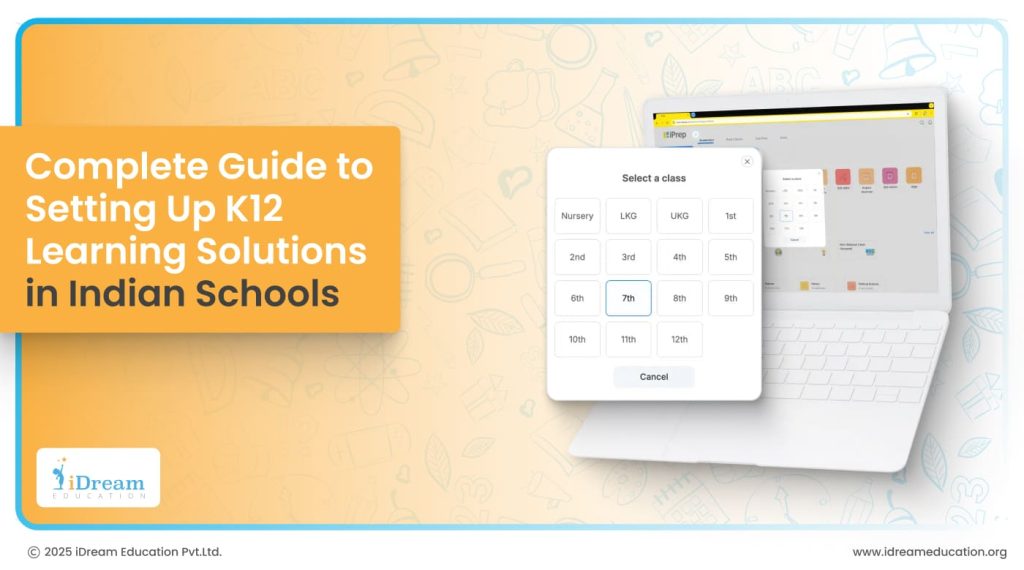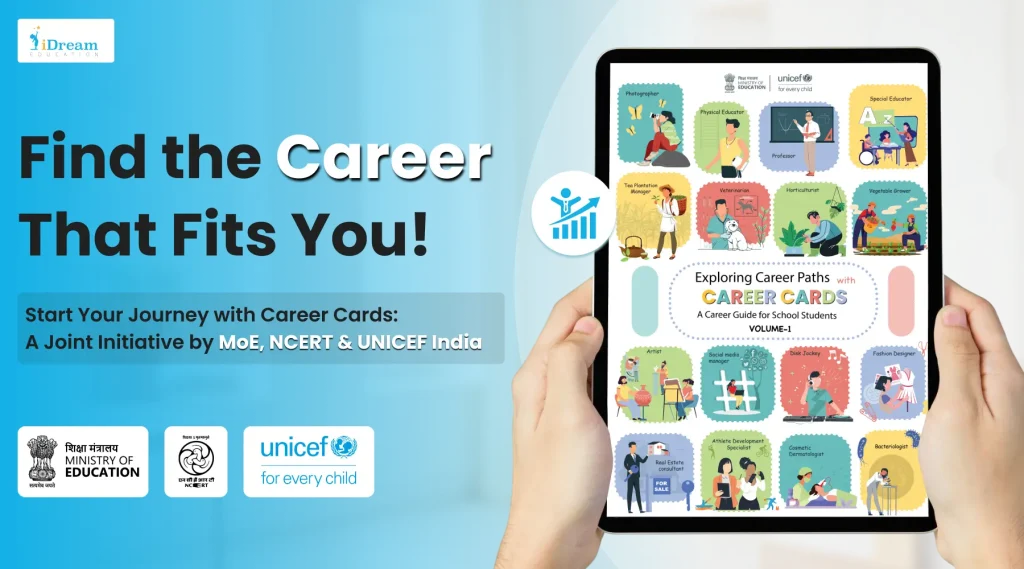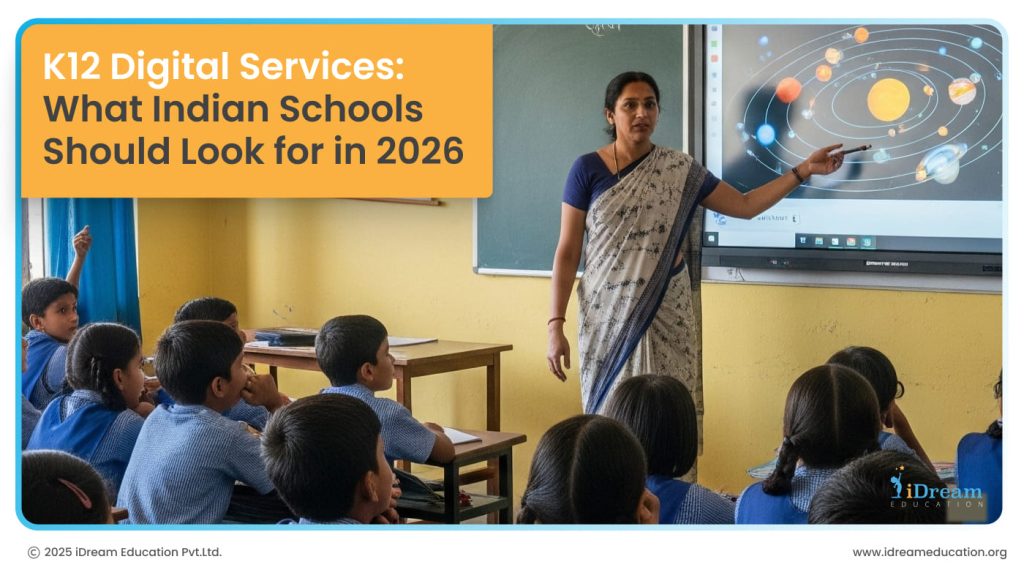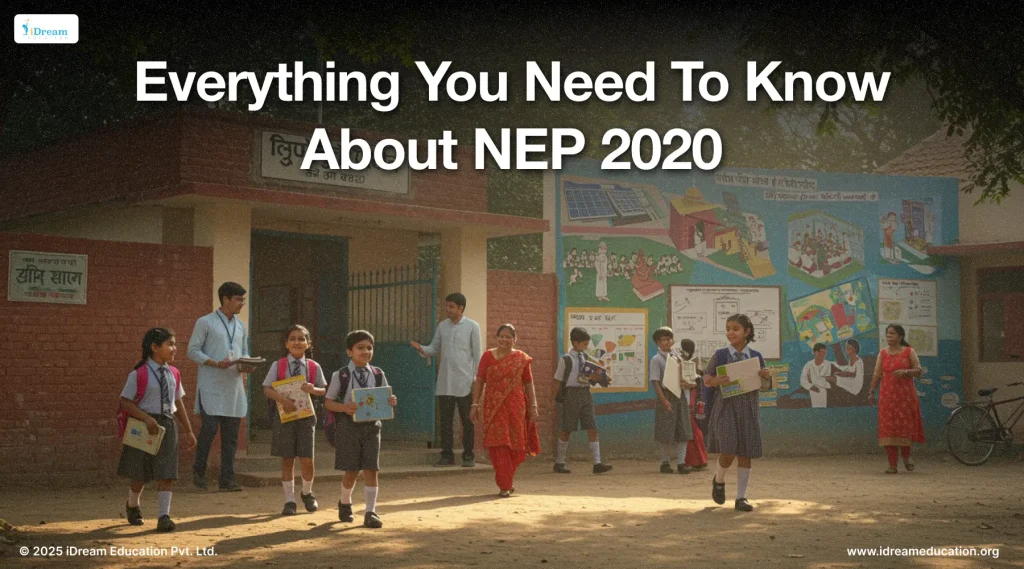
India’s education system has evolved over the years with the help of 3 major National Education Policies (NEP). Each policy is designed to address the changing needs of students, teachers, and the school education system.
- NEP 1968 was the 1st education policy after independence. It focused on giving every child equal learning opportunities, promoting national unity, and making education compulsory up to the age of 14.
- NEP 1986, later updated in 1992, aimed at expanding access to education, bridging gaps for disadvantaged groups, and improving the overall quality of learning.
- NEP 2020, the latest and most ambitious policy, takes a bold leap forward. It aims to reshape India’s education system to meet global standards while staying deeply rooted in Indian culture and values. It talks about flexibility, holistic learning, and preparing students for the 21st century future.
Let’s Understand: What is National Education Policy (NEP 2020)?
NEP 2020 is India’s first education policy of the 21st century. This was introduced with a vision to shape a modern, inclusive, and forward-looking education system. This aims to prepare every learner for the challenges and opportunities of today and tomorrow.
At its core, NEP 2020 is more than just a policy; it’s a complete overhaul of how education is structured, delivered, and governed in India. It aims to align the Indian education system with global standards, especially with the Sustainable Development Goal 4 (SDG4), which focuses on inclusive and equitable quality education for all.
But what truly sets NEP 2020 apart is its focus on the holistic development of every student. The policy recognises that true education goes beyond textbooks. It emphasizes:
- Foundational skills like reading, writing, and basic numeracy
- Higher-order thinking skills such as critical thinking, creativity, and problem-solving
- Social and emotional learning—helping students build empathy, ethics, and emotional intelligence
NEP 2020 draws inspiration from India’s rich heritage of knowledge while embracing the future. It encourages flexibility, creativity, and lifelong learning, aiming to unlock the unique potential within every learner.
Why Was NEP 2020 Introduced?
- The world of work is rapidly changing with automation, AI, and evolving job markets
- India’s education system was seen as rigid, exam-centric, and lacking creativity and practical relevance
- There was a need to integrate foundational learning, digital literacy, skill development, and flexibility
- There was a need to integrate local language content in school education
- NEP 2020 was designed to reduce rote learning, promote multidisciplinary education, and empower learners to become critical thinkers and global citizens
Since its launch, NEP is actively revisited and reviewed each year
With every anniversary in July, new updates are introduced based on the evolving educational landscape, emerging skills, national development goals, and alignment with other government initiatives. As a result, each year brings a refined version—commonly referred to as NEP 2021, NEP 2022, NEP 2023, NEP 2024 and so on. Now, in its fifth year, the policy and its progress are being observed under the term NEP 2025. These evolving versions ensure that the policy remains dynamic, relevant, and responsive to the needs of learners, educators, and the nation.
What Changed After 2020?
Bringing Back Evaluations in Classes 5 and 8
- One of the significant shifts introduced under NEP 2020 is the abolition of the ‘No Detention Policy’. The policy was for Classes 5 and 8. This marks a return to structured evaluations at two crucial stages in a student’s academic journey. 1st stage is upper primary and 2nd is middle school.
- The revised approach doesn’t just focus on passing or failing but places greater emphasis on accountability, academic performance, and regular assessment analysis. The aim is to ensure students have truly grasped foundational concepts before moving to the next level.
- By reintroducing these checkpoints, NEP 2020 seeks to strengthen learning outcomes, identify learning gaps early, and provide necessary support to students who need it. It also encourages schools and teachers to take a more proactive role in monitoring progress and ensuring every learner is on track.
This change reflects NEP’s broader vision: making assessment meaningful—not punitive—so that every child is supported to succeed.
Replacement of the traditional 10+2 schooling system with a new 5+3+3+4 structure
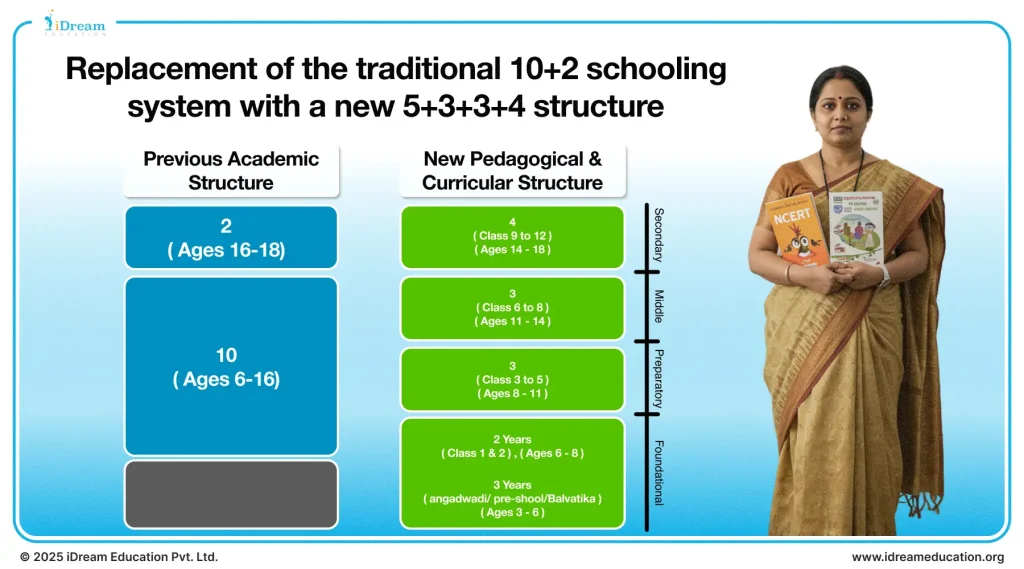
Foundational Stage (5 years) – Ages 3 to 8
- This stage integrates 3 years of preschool or anganwadi (early childhood care and education) with Grades 1 and 2. It caters to the age group of 3 to 8 years, a critical period for brain development.
- The learning approach is play-based, activity-based, and inquiry-driven, designed to foster curiosity, imagination, and social skills.
- Emphasis is on developing motor skills, sensory development, basic numeracy and literacy.
Preparatory Stage (3 years) – Ages 8 to 11
- Covering Grades 3 to 5, this stage builds upon the foundation laid earlier and introduces more structured learning, while still retaining the essence of exploration and play.
- Children begin formal education in subjects such as language, mathematics, science, art, and physical education.
- The focus is on strengthening reading, writing, speaking, and foundational numeracy, while also encouraging creativity, expression, and curiosity.
- The pedagogical approach remains activity-based and interactive, ensuring that learning remains engaging and meaningful.
Middle Stage (3 years) – Ages 11 to 14
- This includes Grades 6 to 8, marking the transition from playful learning to conceptual understanding
- Learners are introduced to more abstract and complex concepts across disciplines such as mathematics, sciences, social sciences, arts, and humanities.
- The focus shifts towards critical thinking, problem-solving, and experiential learning.
- Students may also be introduced to hands-on learning through vocational education, coding, or project-based learning, fostering both academic and practical skills.
Secondary Stage (4 years) – Ages 14 to 18
- Spanning Grades 9 to 12, this final phase of school education is further divided into two parts:
- Grades 9 and 10 (first phase)
- Grades 11 and 12 (second phase)
- This stage emphasizes flexibility, choice, and depth in learning.
- Students can select from a wide range of subject combinations—cutting across arts, science, and vocational education—based on their interests and aspirations.
- The aim is to nurture multidisciplinary understanding, analytical abilities, and deeper conceptual learning.
- This phase prepares students for higher education and careers through a balanced and broad-based curriculum that also promotes life skills, values, and personal development.
This shift moves away from a rigid, one-size-fits-all model and instead supports age-appropriate learning, skill-building, and conceptual understanding from early childhood through adolescence.
The reason behind these revision is
To help every child achieve grade-level competency and ensure their overall development—mentally, emotionally, and academically. It aligns with the broader NEP goal of making learning more child-centric, inclusive, and effective for all.
What is the aim of National Education Policy (NEP) 2020 ?
The National Education Policy (NEP) 2020 aims to achieve a Gross Enrollment Ratio (GER) of 100% in preschool to secondary education by 2030, and to increase the GER in higher education, including vocational education, from 26.3% in 2018 to 50% by 2035.
What are the Key Principles of NEP 2020?
NEP 2020 emphasizes building a good education ecosystem where every student feels welcomed, cared for, and safe, enabling a stimulating learning environment where students get a wide range of learning experiences. As per the NEP Policy, this needs to be the primary goal of every educational institution across all stages of education.
With the focus on above aspects, NEP 2020 has mentioned fundamental principles (Pg. No. 5) that states:
- Recognize, identify, and foster the unique capabilities of each student for holistic development
- Achieve Foundational Literacy and Numeracy (FLN) by all students by Grade 3
- Enable flexibility in learning to empower students to choose courses and learn at their own pace
- NEP 2020 emphasizes eliminating distinctions between curricular and extracurricular activities, arts and sciences, vocational and academic streams, and other divisions to eliminate hierarchies that can be a barrier to learning.
- Holistic Education across all high school streams to ensure unity and integrity of all knowledge
- Eliminate rote learning or learning just for exam to encourage conceptual understanding
- Encourage education that promotes critical thinking and creativity to ensure students have logical thinking and innovation abilities
- Encourage education on humanity, ethics, and constitutional values like respect, empathy for others, cleanliness, democratic spirit, courtesy, spirit of service, and more to life skills among students while growing up and learning
- Encourage Hindi, English and local language in teaching and learning to ensure students are taught in their preferred language or language they are familiar
Some of the most important and deeper features of the NEP are:
- The purpose of assessment in our schooling system will shift from a focus on summative exams and rote memorization to a more regular, formative approach. A National Assessment Centre, PARAKH, is established under MHRD as a standard-setting body to define norms and guidelines for student assessment across all school boards, guide national and state surveys, monitor learning outcomes, and support the shift towards 21st-century skill-based evaluation aligned with NEP objectives. [Pg No. 18, 19]
- Every student possesses unique innate talents that must be identified, nurtured, and developed. Students who demonstrate exceptional interests or abilities in specific areas should be encouraged to explore and excel beyond the standard curriculum. Integration of technology in classrooms to remove language barriers, increase accessibility for Divyang students, and improve access to education. [Pg No. 19,20]
- Value diversity and acknowledge the significance of the local context in every aspect of curriculum, pedagogy, and policy
- Promote equity and inclusion to help every student thrive
- Synergy in curriculum across all levels of education from foundational years to school to higher education
- Continuous recruitment and professional development to enable positive working environment
- “Light but Tight” regulatory framework to ensure transparency, integrity, & resource
- efficiency
- Continuous research to ensure continuous improvement in education system
- Regular review by education experts to ensure progressive research and assessment
- Keep students intact with roots and pride in India by teaching them about rich, diverse, ancient, and modern culture, knowledge systems and traditions of the country
- Enabling education in remotest corner of India to ensure education reaches the last mile learner
- Substantial investment in the public education system through philanthropic private and community participation
These principles establish a strong foundation for the EdTech sector, as well as for public and private philanthropists, hardware suppliers, system integrators, and other stakeholders within the educational ecosystem to contribute and drive the transformation of India.
3 Pillars of NEP Revamping School Education: Structure, Governance, and Quality
The National Education Policy with this vision proposes a holistic revamp of the entire education structure. This includes:
Integration of Technology
- NEP emphasizes the integration of digital tools and platforms through various initiatives. This focuses on energized textbooks, high-quality e-content for teachers and students, and question banks aligned with learning outcomes. These measures are designed to enhance both teaching and learning experiences, making education more engaging, inclusive, and outcome-oriented.
Governance and Resource Allocation
- While recognizing the significant progress made in ensuring access to education—particularly through the establishment of primary schools in every habitation. The policy also addresses the challenge of small, under-resourced schools with low student enrollment. To overcome the limitations posed by such fragmented infrastructure, the NEP recommends the formation of school complexes or innovative groupings of public schools. This approach aims to facilitate better resource sharing, improved teacher deployment, and more efficient governance.
Quality Education
- At its core, the policy places a strong emphasis on Quality Education across all stages of school learning. Quality, as defined in the NEP, is not merely academic excellence—it is the nurturing of well-rounded, confident individuals capable of contributing meaningfully to society. Education must be a mind-crafting and character-building experience that fosters responsible citizenship. Empowered learners are the foundation of a just, equitable, and progressive India, and the NEP charts a clear path toward realizing this vision.
How is NEP Enhancing Exams: Making Assessments More Meaningful
The National Education Policy (NEP) 2020 is bringing a refreshing shift in the way examinations are perceived and conducted in India. Moving away from the pressure-driven, rote-based evaluation system, the policy aims to make exams ‘easier’ in spirit—not by lowering standards, but by focusing on core competencies, understanding, and application. The goal is to reduce the over-reliance on coaching centers and empower students to learn meaningfully in classrooms and at home.
- One of the landmark changes is in board examinations, which will now be offered twice a year. This gives students a valuable opportunity to improve their scores without the fear of “one-shot” pressure, allowing them to plan and pace their learning more effectively.
- The format of exam questions is also evolving. Board papers will now have a mix of objective (MCQs) and descriptive questions. This will enable conceptual clarity and written expression. This variety encourages critical thinking rather than memorization.
- Further supporting this transformation, the National Testing Agency (NTA) will conduct a high-quality Common Aptitude Test and subject-specific exams at least twice a year. These standardized, nationwide tests are designed to evaluate true aptitude and subject knowledge, making college admissions more equitable and transparent.
Together, these changes are laying the foundation for a more balanced and student-centric assessment system. A system that nurtures learning instead of fear.
What’s Changing for Teachers Under NEP 2020?
Teachers are at the heart of any education reform, and the National Education Policy 2020 places strong emphasis on empowering teachers to become facilitators of meaningful learning. Recognizing that quality education begins with well-supported teachers, NEP 2020 introduces a structured framework for continuous professional development.
- A key mandate is that every teacher will undergo a minimum of 50 hours of annual training. The training will focus not just on subject content, but also on the latest pedagogical practices. The purpose is to keep them up-to-date with evolving teaching methodologies. This will promote deeper student engagement and better learning outcomes.
- Additionally, the policy encourages active participation with the National Educational Technology Forum (NETF). Through NETF, teachers gain exposure to cutting-edge digital tools and technologies, enabling them to effectively integrate ICT (Information and Communication Technology) into their daily teaching practices.
This blended approach of training + technology equips teachers to adapt to modern classrooms, personalize learning experiences, and stay agile in a rapidly changing education landscape. Ultimately, NEP 2020’s focus on teacher development is a long-term investment which aims at building a motivated, tech-savvy, and pedagogically strong teaching force across the country.
Funding and Resource Allocation: Turning NEP 2020 Vision into Reality
One of the ambitious goals of NEP 2020 is to raise public investment in education to 6% of India’s GDP. This signals a strong national commitment to quality learning for all. In the past three years, over ₹1.3 lakh crore has been allocated toward this vision, a significant step forward.
However, challenges remain. Inconsistent disbursement under key educational schemes has slowed progress on the ground. To truly bring NEP 2020 to life across all states and classrooms, effective budgeting, efficient fund flow, and timely resource allocation are essential. It’s not just about the amount of investment—but how wisely and impactfully it is used. With focused financial planning and accountability, this investment has the potential to transform the education ecosystem from infrastructure and teacher training to digital access and equitable learning opportunities.
How iDream Education Is Turning NEP 2020 Into Reality for School Education?
At iDream Education, we are excited to witness the clear direction and impactful reforms brought by the National Education Policy (NEP) 2020. As a part of India’s education ecosystem, we are taking deliberate, NEP-aligned steps to ensure meaningful learning outcomes across schools nationwide.
Some of it includes:
- Our subject matter experts continuously monitor updates from national and state curriculum. As part of this, we’ve already updated textbooks and digital content for Classes 3 and 6 based on the latest NCERT changes and we are actively working on content for Classes 4, 5, 7, and 8.
- Understanding the importance of regional access and inclusivity, we’ve developed curriculum-aligned digital content in 11 languages, including Hindi and English. This multi-language content is already being used across 23 states in India. This is to ensure students learn in the language they are most comfortable with.
- To support NEP’s vision of competency-based assessments, we maintain a growing repository of over 60,000 questions. We are also actively implementing a personalized adaptive learning solution to help students bridge historical learning gaps. Our adaptive learning technology is build a strong foundation as they progress from one stage to the next, in line with the new NEP structure.
- We also recognize that teachers are central to NEP’s success. That’s why our on-ground teams are focused on teacher training and capacity building, helping them use technology meaningfully in their classrooms. We also empower them with student usage analytics, so they can take data-driven decisions to enhance lesson planning and support individual learning progress.
- In line with NEP’s emphasis on holistic development, we go beyond academics by curating and creating multi-category content that promotes experiential, activity-based learning, making education more joyful and relevant for students.
We would be happy to connect with you and give a demo of our NEP-aligned content and solutions. To know more or schedule a session, you may contact us at +91 7678265039. You can also write to us at share@idreameducation.org or share your details here.
Closing Thoughts
As India marches ahead into the ‘Amrit Kaal’—the 25-year journey towards becoming a Developed Nation by 2047—the National Education Policy stands as a cornerstone for transforming the education landscape. With its visionary approach, the policy is poised to create a robust, inclusive, and future-ready system that nurtures skilled, empowered, and globally competent citizens. However, turning this vision into reality demands commitment and collaboration from all stakeholders—Central and State Governments, Union Territories, Higher Education Institutions, Regulatory Bodies, and education leaders across the spectrum. Only through collective and sustained efforts can we ensure that the NEP’s promise translates into lasting, meaningful impact for generations to come.
Frequently Asked Questions -
1. What are the key differences between the old NEP and NEP 2020?
NEP 1968 focused on equal learning opportunities, compulsory education up to age 14, and promoting national integration. NEP 1986 (updated in 1992) aimed to expand education access, support disadvantaged groups, and improve quality. NEP 2020 promotes flexibility, holistic learning, and global standards while staying rooted in Indian values, preparing students for future skills and jobs.
2. How does NEP 2020 benefit students and teachers?
NEP 2020 benefits students by offering flexible subject choices, a focus on skills, and holistic development. For teachers, it provides better training, support, and freedom to use innovative teaching methods. It aims to make learning more engaging and future-ready for everyone.
3. What is NEP 2020 and why is it important?
NEP 2020 is India’s first education policy of the 21st century. It aims to create a modern, inclusive, and learner-focused education system. It emphasizes not just academic knowledge but also skills like critical thinking, creativity, and emotional intelligence, helping students succeed in life, not just in exams.
4. What is the new 5+3+3+4 structure in NEP 2020?
NEP 2020 replaces the old 10+2 system with a new 5+3+3+4 structure: 5 years of Foundational Stage (ages 3–8) 3 years of Preparatory Stage (ages 8–11) 3 years of Middle Stage (ages 11–14) 4 years of Secondary Stage (ages 14–18) This structure aligns with how children grow and learn, focusing on better learning outcomes.
5. What are the key focus areas of NEP 2020?
Foundational literacy and numeracy Critical thinking and creativity Social and emotional learning Flexibility in subject choices Use of mother tongue or local language as the medium of instruction till at least Grade 5
6. How are schools in India implementing NEP 2020 in digital learning?
Many schools are adopting digital tools aligned with NEP 2020 to promote flexible, student-centric learning. For example, iDream Education is working in line with NEP and its updates in curriculum. One of the examples is its digital content as per the latest NCERT changes and offers multi-language support to help students learn in the language they are most comfortable with.
7. What is being done to promote learning in regional languages under NEP 2020?
NEP 2020 encourages learning in a child’s home language or regional language, especially in early grades. Following this, companies such as iDream Education have created curriculum-aligned content in 11 Indian languages, now being used across 23 states, to support inclusive and accessible learning. We are working on other languages as well.
8. How are students being supported with personalized learning under NEP 2020?
Personalized learning is a key part of NEP 2020. To support this, solutions such as iDream Education’s personalized adaptive learning platform iPrep PAL diagnose primary level performance and enable guided learning through practice, final test and mastery to help students overcome historical learning gaps and progress at their own pace.


